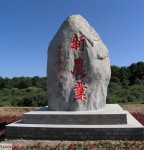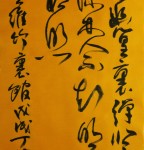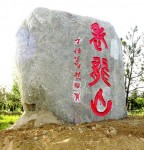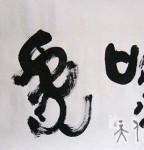A reviewer above has already done an excellent job of summarizing the book, so I can only hope that my review can serve as a complement. "1587" is essentially an examination of why the Ming dynasty--an institution that commanded great wealth and governed a vast nation--was already showing signs of decay and its impending collapse under the reign of the Wanli emperor. Ray Huang does an excellent job to show how cultural inertia and an institution that governed miserably effectively neutralized the voice and power of individual participants. The Ming dynastic system did not tolerate loyal opposition and was not designed for ministers or individuals to discuss opposing views in an orderly manner, which meant that power struggles were bound to be ugly as rival ministers and bureaucrat employed moral arguments to tarnish each others' reputation. Avenues for advancement within government amounted to a zero-sum game in which an official's effectiveness in governance was a barometer of his morality (bound with tradition and Confucian precepts open to interpretation). Imagine if your local mayor was judged not on his or her effectiveness or merit, but on whether he or she was a morally upright individual who was adhering to both the spirit and traditions of the past.
The Ming imperial system also placed a greater value on the institution and sought to dehumanize the emperor. The emperor was the emperor--he was not Wanli, not Jiajing, etc. The bureaucrats and officials--whose power was constrained individually--exercised great power as a group, effectively dictating how the emperor should act, behave, and present himself to the public. Little wonder then, that the Wanli emperor, whose power was in the negative and not the positive, hardly sought to rule in an effective manner after being weighed down by such an institution. Others in the drama--the powerful minister, the innovative general, the eccentric bureaucrat, and the dissenting scholar--would find the same forces inhibiting their ability to affect real changes.
Huang ends his book by concluding that the Ming dynasty was a "highly stylized society wherein the roles of individuals were thoroughly restricted by a body of simple yet ill-defined moral precepts, [and that] the empire was seriously hampered in its development, regardless of the noble intentions behind those precepts. The year 1587 may seem to be insignificant; nevertheless, it is evident that by that time the limit for the Ming dynasty had already been reached. It no longer mattered whether the ruler was conscientious or irresponsible, whether his chief counselor was enterprising or conformist, whether the generals were resourceful or incompetent, whether the civil officials were honest or corrupt, or whether the leading thinkers were radical or conservative-in the end they all failed to reach fulfillment. Thus our story has a sad conclusion. The annals of the Year of the Pig (1587) must go down in history as a chronicle of failure."
I recommend this book for all those not only interested in the history of the Ming dynasty, but to those who are interested in the nature of Chinese imperial statecraft and the question of how government should be structured.
| < Prev | Next > |
|---|
- 2009-06-24 - 廖氏愤青教材(转载)
- 2009-04-08 - 天使乎,白狼乎?
- 2009-01-07 - 丁仕美的君子风 - 转载
- 2008-12-19 - 从历史看儒家文明的生命力
- 2008-12-04 - 司徒雷登:别了六十年还要回来
- 2008-11-23 - 晋豫之行日记(2)- 萧功秦
- 2008-11-22 - 晋豫之行日记(1)-萧功秦
- 2008-10-24 - 叫洋人大开眼界-转载
- 2008-10-19 - 我该买什么样的房子?
- 2008-10-08 - 都缺个陪聊的儿女













